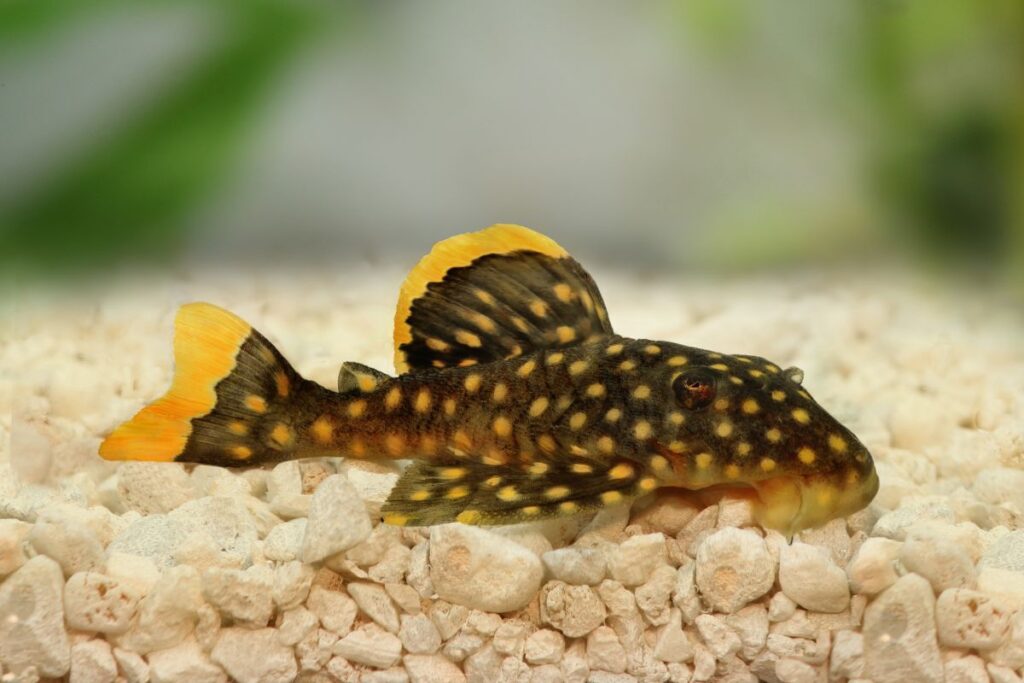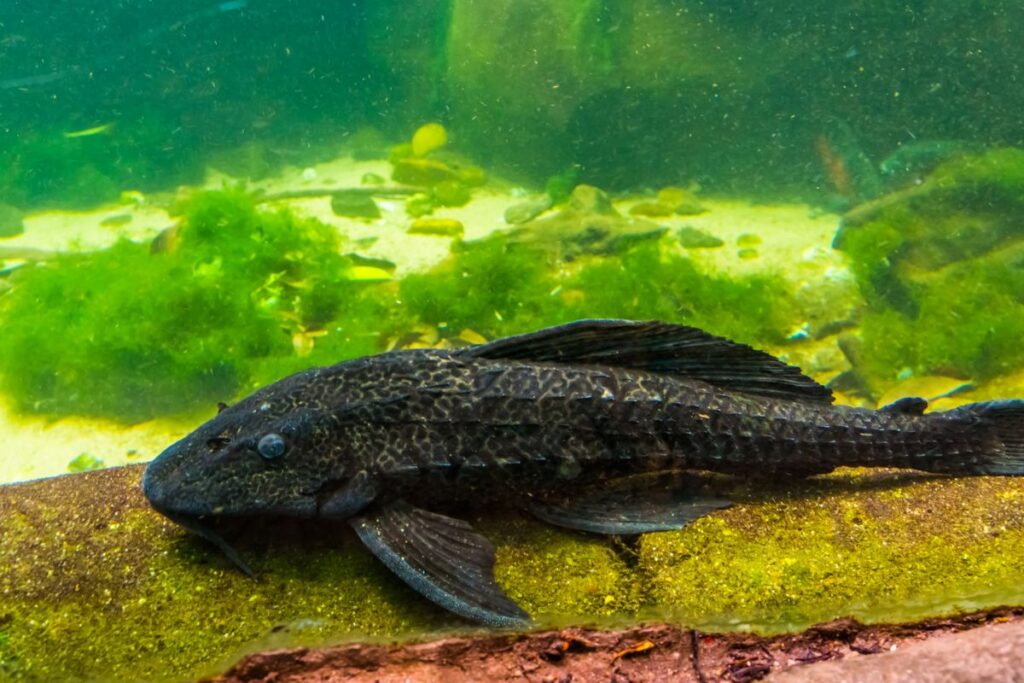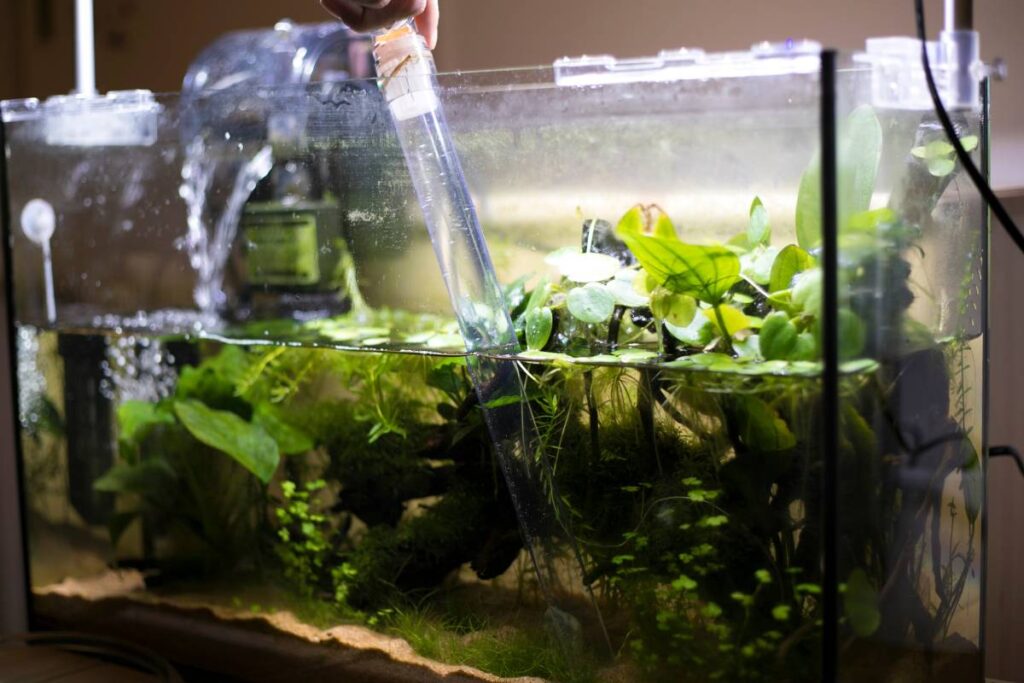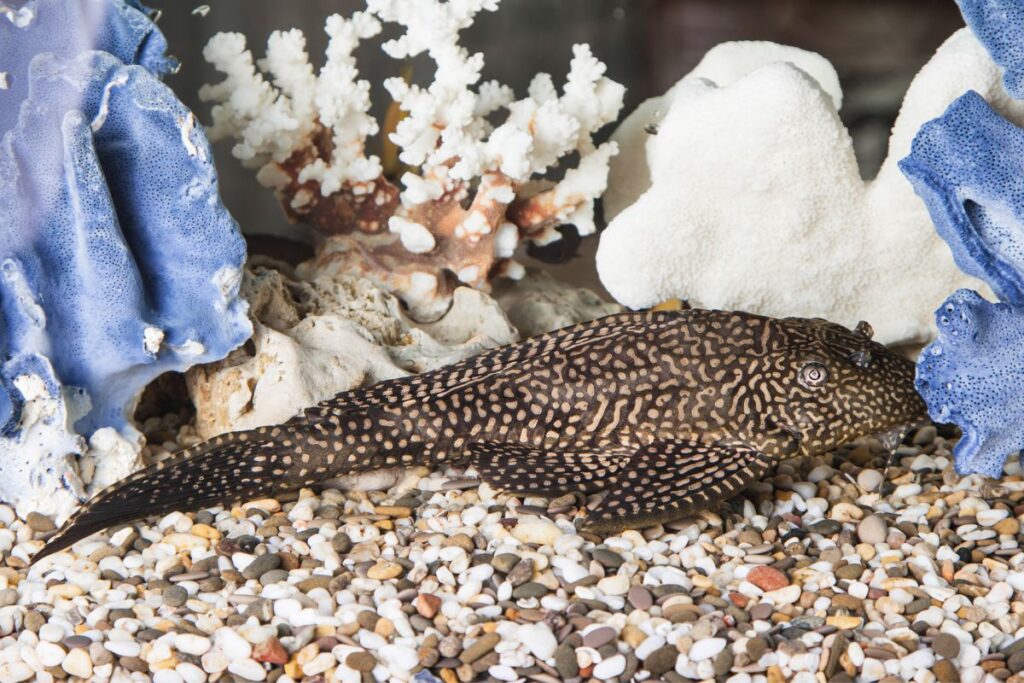If you’re a fish lover and you own a pleco, you know how important it is to keep your fish healthy. Plecos, also known as suckerfish, are hardy and easy to care for, but they can still fall ill like any other fish.
It’s important to know the signs of a healthy pleco so that you can keep them happy and thriving in their environment.
A healthy pleco will be active, have a round belly, clear eyes, and a smooth, unblemished body. It will also show interest in food and have a regular feeding schedule. If the pleco appears lethargic, has sunken eyes, a sunken belly, or damaged fins, it may be a sign of illness or poor water quality.
As a pleco owner myself, I know how concerning it can be when your fish isn’t acting like their usual self.
That’s why in this article, we’ll cover the key indicators of a healthy pleco. We’ll discuss everything from their physical appearance to their behavior so that you can be confident in knowing whether or not your fish is healthy.
By the end of this article, you’ll have a better understanding of how to keep your pleco in top shape.

Table of Contents
Physical Appearance
One of the most important indicators of a pleco’s health is its physical appearance. In this section, we will discuss the various aspects of a pleco’s appearance that can help you determine its overall health.
Body Shape and Size
The body shape and size of your pleco can tell you a lot about its health. A healthy pleco should have a plump and rounded belly, indicating that it is well-fed and healthy. If your pleco appears thin or emaciated, it may be a sign of illness or malnutrition.
Additionally, the overall size of your pleco can also be an indicator of its health. Depending on the species, plecos can range in size from just a few inches to over a foot long.
If your pleco is significantly smaller or larger than average for its species, it may be a sign of stunted growth or other health issues.
Coloration and Patterns
The coloration and patterns of your pleco can also provide important clues about its health. A healthy pleco should have bright and vibrant colors, with no signs of discoloration or fading.
Additionally, the patterns on your pleco’s body should be crisp and well-defined, with no signs of blurring or smudging.
It’s worth noting that some pleco species naturally have more subdued or muted colors, so it’s important to be familiar with the typical coloration of your specific species.
If you notice any significant changes in your pleco’s coloration or patterns, it may be a sign of stress or illness.
Personally, I have a bristlenose pleco that I’ve had for several years. When I first got him, he was quite small and had a dull, grayish-brown coloration.
However, as he has grown and matured, his coloration has become much more vibrant and his patterns have become more defined. This is a good indication that he is healthy and well-cared for.
Behavioral Indicators

When it comes to the health of your pleco, there are several behavioral indicators you should be aware of. These can help you determine if your fish is healthy or if there may be an underlying issue that needs to be addressed.
Appetite
One of the most important indicators of a healthy pleco is their appetite. A healthy pleco should have a good appetite and be eager to eat.
If your pleco is not eating, it could be a sign of illness or stress. It’s important to monitor their feeding habits and adjust their diet if necessary.
Activity Level
The activity level of your pleco can also be a good indicator of their health. A healthy pleco should be active and swim around their tank.
If your pleco is lethargic or spends a lot of time hiding, it could be a sign of illness or stress. Keep an eye on their activity level and make sure they have plenty of space to swim around.
Breathing and Gills
Another important indicator of a healthy pleco is their breathing and gills. A healthy pleco should have smooth, steady breathing and their gills should be a healthy color.
If you notice any labored breathing or discoloration in their gills, it could be a sign of illness or poor water quality. Make sure to keep their tank clean and well-maintained to ensure good water quality.
Personally, I’ve had a pleco for several years and have learned to recognize when he’s not feeling well. One time, I noticed that he wasn’t eating as much and was spending a lot of time hiding in his cave.
I did some research and discovered that he may be stressed due to a lack of hiding spots in his tank. I added some more decorations and plants, and he immediately perked up and started eating again.
It’s important to pay attention to your pleco’s behavior and make adjustments as necessary to ensure their health and happiness.
Environmental Factors
There are several environmental factors that can affect the health of your pleco. In this section, we will discuss the most important factors to consider when caring for your pleco.
Water Quality

The quality of the water in your pleco’s tank is crucial to its health. Plecos are sensitive to changes in water chemistry, so it’s important to maintain a stable environment. Here are some things to keep in mind:
- Test your water regularly to ensure that the pH, ammonia, nitrite, and nitrate levels are within the acceptable range for plecos.
- Perform partial water changes on a regular basis to keep the water clean and fresh.
- Use a good quality water conditioner to remove chlorine and chloramines from tap water.
By monitoring and maintaining the water quality, you can help ensure that your pleco stays healthy and happy.
Tank Size and Setup
The size and setup of your pleco’s tank are also important factors to consider. Plecos are known for their large size, so it’s important to provide them with a tank that is big enough to accommodate their needs. Here are some things to keep in mind:
- Aim for a tank that is at least 55 gallons for a single pleco, and larger if you plan to keep multiple plecos.
- Provide plenty of hiding places, such as caves and driftwood, for your pleco to feel secure.
- Make sure the tank is well-filtered to keep the water clean and clear.
By providing your pleco with a spacious and comfortable environment, you can help ensure that it thrives in captivity.
Personally, I have found that providing my pleco with plenty of hiding places has made all the difference in its health and well-being.
When I first got my pleco, I noticed that it was shy and reclusive, spending most of its time hiding behind the filter.
But after I added some caves and driftwood to the tank, my pleco became much more active and confident, swimming around the tank and exploring its surroundings. It’s amazing how much of a difference a few simple changes can make!
Common Health Issues
As a pleco owner, it is important to be aware of the most common health issues that can affect your fish. Knowing the signs and symptoms of these issues can help you identify problems early and seek appropriate treatment.
Parasites and Infections
One of the most common health issues that plecos face is parasitic and bacterial infections. These can be caused by a variety of factors, including poor water quality, overcrowding, and stress.
Signs of a parasitic or bacterial infection include lethargy, loss of appetite, and abnormal swimming behavior.
If you suspect that your pleco is suffering from a parasitic or bacterial infection, it is important to seek veterinary care immediately.
Treatment typically involves antibiotics or other medications to help kill off the infection.
Injuries and Wounds
Another common health issue that plecos may face is injuries or wounds. These can be caused by a variety of factors, including aggression from other fish in the tank, rough handling during transport or cleaning, or even accidental injury from decorations or other objects in the tank.
If you notice that your pleco has an injury or wound, it is important to take steps to help it heal.
This may include moving the fish to a separate tank to prevent further injury, providing a clean and safe environment for the fish to heal, and administering medications or other treatments as needed.
Personally, I have had a pleco that suffered from a wound caused by a sharp decoration in the tank. I immediately removed the decoration and moved the pleco to a separate tank to prevent further injury.
With proper care and treatment, the wound eventually healed and the pleco made a full recovery.
Tips to Keep Your Pleco Healthy
As a proud owner of a pleco, I’ve learned a few tips and tricks to keep my fish healthy and happy. Here are some things to keep in mind:
- Provide a balanced diet: Plecos are herbivores and need a diet that is high in fiber. Offer a variety of vegetables such as zucchini, cucumber, and spinach, as well as sinking pellets designed for plecos.
- Maintain a clean tank: Plecos are known for producing a lot of waste, so it’s important to keep their tank clean. Use a gravel vacuum to remove uneaten food and waste from the substrate, and perform regular water changes.
- Provide hiding places: Plecos are nocturnal and like to hide during the day. Provide caves or other hiding places in the tank to make your pleco feel safe and comfortable.
- Monitor water parameters: Plecos are sensitive to changes in water quality. Test the water regularly for pH, ammonia, nitrite, and nitrate levels, and make adjustments as needed.
- Keep the temperature stable: Plecos prefer water temperatures between 72-82°F. Fluctuations in temperature can stress your fish and make them more susceptible to disease.
By following these tips, you can help ensure that your pleco stays healthy and happy for years to come. Remember to always keep an eye on your fish and seek veterinary care if you notice any signs of illness.
Ideal Conditions for Pleco

Creating an ideal environment for your pleco is crucial to its overall health and well-being. Here are some factors to consider:
- Water temperature: Plecos are tropical fish and require water temperatures between 72-86°F (22-30°C) to thrive.
- pH level: The ideal pH level for plecos is between 6.5-7.5.
- Water quality: Plecos are sensitive to poor water quality and require a well-maintained aquarium. Make sure to regularly test the water parameters and perform water changes as needed.
- Aquarium size: Plecos can grow quite large, so make sure to provide them with an aquarium that is big enough for them to swim and move around comfortably.
- Decorations: Plecos love to hide and rest in caves and other decorations. Providing them with plenty of hiding spots will help reduce stress and promote natural behaviors.
Personally, I have found that my pleco thrives in an aquarium with a lot of plants and driftwood. These items not only provide hiding spots, but also help to create a more natural environment for the fish.
Remember, creating ideal conditions for your pleco is an ongoing process that requires regular maintenance and attention. By providing your pleco with the right environment, you can help ensure that it lives a long and healthy life.
Recommended Products As Per The Article:
- API Aquarium Test Kit: This kit can help you monitor the pH, ammonia, nitrite, and nitrate levels in your pleco’s tank, ensuring that the water quality is within the acceptable range for plecos.
- TetraPleco Wafers: These sinking pellets are specifically designed for plecos and provide a balanced diet that is high in fiber.
- Penn-Plax Hideaway Pipes: These decorative pipes provide your pleco with a place to hide and rest, reducing stress and promoting natural behaviors.
- EHEIM Classic External Canister Filter: This filter is well-suited for larger tanks and can help keep the water clean and clear, reducing the risk of illness and disease.
- Hydor ETH In-Line Heater: This heater can help maintain a stable water temperature, ensuring that your pleco stays comfortable and healthy.
Conclusion
Caring for a pleco can be rewarding, but it requires a lot of patience and attention to detail. By keeping an eye on their behavior, appearance, and environment, you can ensure that your pleco stays healthy and happy.
Remember to check the pH and temperature of their tank regularly, and make sure that they have plenty of hiding spaces and clean water. Keep an eye out for any signs of illness, such as discoloration or lethargy, and address them promptly.
It’s also important to provide your pleco with a varied diet that includes plenty of vegetables and algae. This will help to keep their digestive system healthy and prevent any potential health issues.
Overall, taking care of a pleco can be a rewarding experience. By following these tips and paying close attention to your fish, you can ensure that they live a long and healthy life.
Personally, I have found that taking care of my pleco has been a great way to relax and unwind after a long day. Watching them swim around their tank and interact with their environment is truly mesmerizing, and it’s a great reminder of the beauty and complexity of nature.
So if you’re considering getting a pleco, I would highly recommend it. With a little bit of effort and attention, you can provide them with a happy and healthy home that they will thrive in for years to come.
“Learn how to keep your pleco healthy and happy with our Pleco Care 101 guide – the ultimate resource for all pleco owners!”
Reference: Wikipedia.
